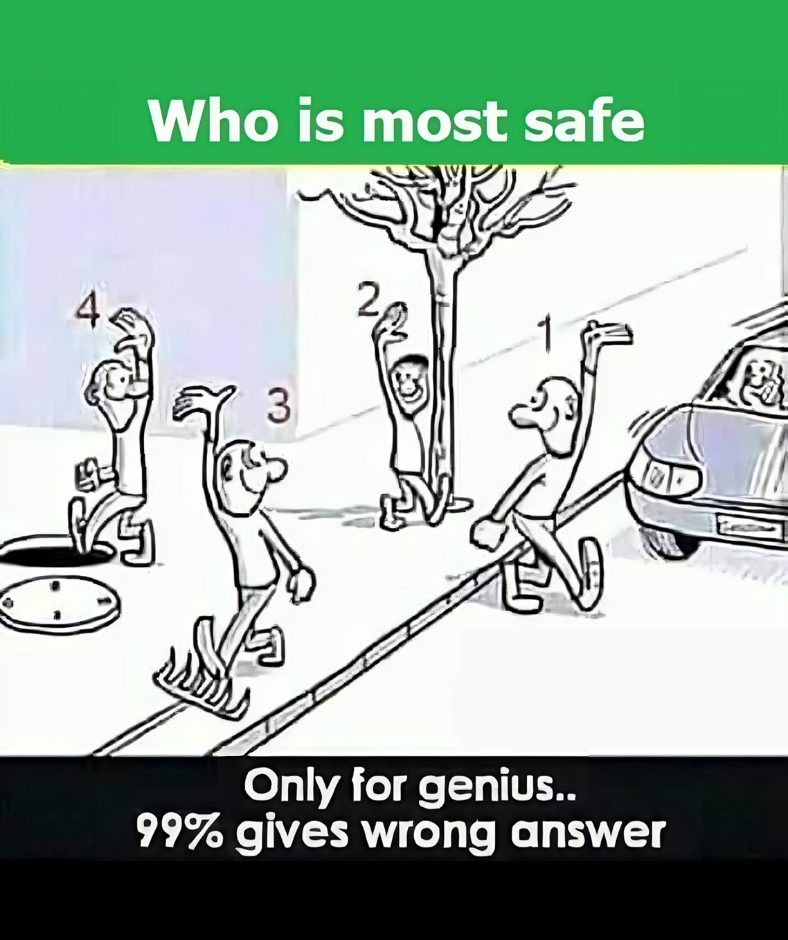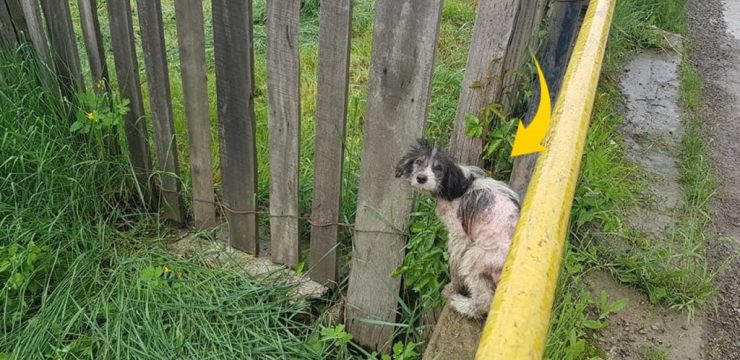Safety isn’t always what it seems. We’ve all encountered puzzles and brain teasers that make us pause, but the “Spot the Safest Person” puzzle does more than just tease your brain—it challenges your very perception of risk and safety. Let’s dive into this intriguing puzzle and uncover its deeper meaning.
The Puzzle: A Glimpse Into Perceived Danger
At first glance, the “Spot the Safest Person” puzzle might seem like a straightforward test of logic. The scene presents several individuals in precarious situations: someone dangling from a tree branch, another teetering on the edge of a cliff, and a pedestrian stepping into the street. It’s a scene packed with obvious dangers, making it tempting to quickly choose the person who seems the least at risk. But that’s where the real challenge begins.

What Is the “Spot the Safest Person” Puzzle?
The “Spot the Safest Person” puzzle is a brain teaser that requires more than just a surface-level assessment. The puzzle challenges you to look beyond the obvious risks and consider the broader context of safety and control.
The Obvious Dangers in the Scene
Let’s break down the scene. The puzzle typically includes several individuals, each facing different types of danger:
- The Pedestrian in the Street: This person appears to be in the most immediate danger, potentially about to be struck by a vehicle. It’s an instinctual reaction to view this as the highest risk.
- The Person Near the Road: This individual is walking precariously close to the traffic lanes, where a single misstep could lead to a serious accident.
- The Person Navigating an Obstacle: Another individual faces a potential tripping hazard, which, while seemingly minor, could result in injury.
- The Person on Uneven Terrain: This person risks stumbling into a small hole or depression in the ground, which could lead to a fall or twisted ankle.
The Deceptive Nature of Surface-Level Risks
When you first examine the scene, it’s natural to focus on these individuals and their apparent dangers. But the puzzle isn’t about identifying who is in the least immediate danger—it’s about understanding who has the most control over their environment.
The Safest Person: A Shift in Perspective
So, who is the safest person in this scene? It might surprise you, but it’s the person you probably overlooked: the driver in the car.
The Driver in the Car: The Hidden Safety
- Control Over the Environment: The driver, encased in a vehicle, has a significant advantage. The car provides protection, and the driver has control over the speed, direction, and safety features of the vehicle.
- Awareness and Focus: Unlike the pedestrians, the driver is likely focused on the task at hand, aware of the surroundings, and in a position to react quickly to potential hazards.
- The Power of Protection: The car itself acts as a shield, safeguarding the driver from the external risks that the pedestrians face.
The Deeper Lesson: Rethinking Safety and Risk
The brilliance of the “Spot the Safest Person” puzzle lies in its ability to make us rethink our assumptions about safety. It’s not just about who appears to be in the least danger—it’s about who has the tools and control to manage the risks they face.
Safety Is More Than Just Avoiding Danger
- Understanding Risk Management: True safety often comes from understanding and managing risks, not just avoiding them. The driver, for example, has accepted the inherent risks of driving but mitigated them through control and awareness.
- The Illusion of Immediate Danger: The pedestrians might seem to be in more danger because their risks are immediate and visible. However, their lack of control over the situation actually makes them more vulnerable.
Applying the Puzzle’s Lesson to Real Life
- In Personal Safety: Consider how you approach safety in your daily life. Are you focusing on avoiding visible risks, or are you taking control of your environment and managing potential hazards?
- In Professional Life: The puzzle can also apply to workplace safety. It’s not just about avoiding risks but about understanding and controlling them effectively.
Conclusion: The Puzzle as a Metaphor for Life
The “Spot the Safest Person” puzzle is more than just a brain teaser—it’s a metaphor for how we navigate safety and risk in our lives. It reminds us that safety isn’t always about avoiding danger; sometimes, it’s about having the knowledge, tools, and control to face risks head-on.
Next time you’re confronted with a decision about safety, think about the driver in the car. Are you in control of your situation, or are you merely avoiding the obvious dangers? By shifting your perspective, you might find that the safest choice isn’t always the most apparent one.
This article offers a deep dive into the “Spot the Safest Person” puzzle, encouraging readers to rethink how they perceive safety and risk. It’s a reminder that true safety often lies in control and awareness, not just in avoiding immediate dangers.





